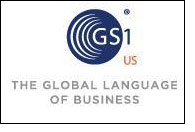Major American retailers, brands and technology providers have agreed on a set of guidelines for assigning serialized identification numbers to individual items – making it possible to trace individual products as they move through the global apparel supply chain. The information standards organization GS1 US released the guidelines at its annual GS1 Connect Conference here.

The new technical guidelines, EPC-enabled RFID Serialization Management for SGTIN-96, are now available at no cost through the GS1 US website. They provide best practices as well as various methodologies for assigning globally unique identification to individual trade items, using a Global Trade Item Number (GTIN) plus a unique serial number. This combination is known as a Serialized Global Trade Item Number, or SGTIN.
"This document should be the first stop for any company that is implementing right now – regardless of their level of understanding or in involvement in item level tagging. This, as with all GS1 US-led efforts, was created by industry, for industry – and will serve the retail sector well for years to come," said Doug Harvel, IT project leader at Jockey International, Inc.
"Our goal was to offer consistent and practical guidance to any business embarking on EPC-enabled RFID technology at the item level," said Gena Morgan of GS1 US, who chaired the cross-industry user group that authored the guidelines. "It is another example of how industry is driving the responsible use of RFID technology in order to achieve interoperability and inventory visibility like never before – all the way from the manufacturing source to the store shelf."
Assigning a SGTIN to individual items means that two otherwise identical units of the same product are uniquely identifiable, making it possible to fully use the power of Radio Frequency Identification (RFID) for simultaneous inventory counts and ensure that the right product is in the right place, at the right time.
Several of America's leading retailers and brands were part of the working group responsible for the document, including: Jockey International, Lord & Taylor, Macy's, Maidenform, PVH Corp. (owner of Calvin Klein, Tommy Hilfiger, and other leading brands), along with several technology providers.
"This should be part of every company's EPC item-level RFID implementation toolbox," said Pam Sweeney, senior vice president, Logistics Systems, at Macy's. "It helps companies understand the importance of serialization, its relationship to the technology and why standards are so important when managing serialization."
The guidelines are intended to supplement GS1 standards that are already part of the GS1 System, the world's most widely used supply chain standards framework. In particular, they offer several strategies to avoid duplication of serial numbers when multiple parties are involved in EPC tagging, whether internal brand manufacturing plants or external parties, such as contract manufacturers or service bureaus.
"Serialization is a critical component of any EPC-enabled RFID implementation and a necessary first step for companies to prepare for the future retail supply chain," said Patrick Javick, vice president of industry engagement at GS1 US. "These guidelines will help companies leverage their existing technology investments and move forward with successful, cost-effective EPC item-level implementations."



